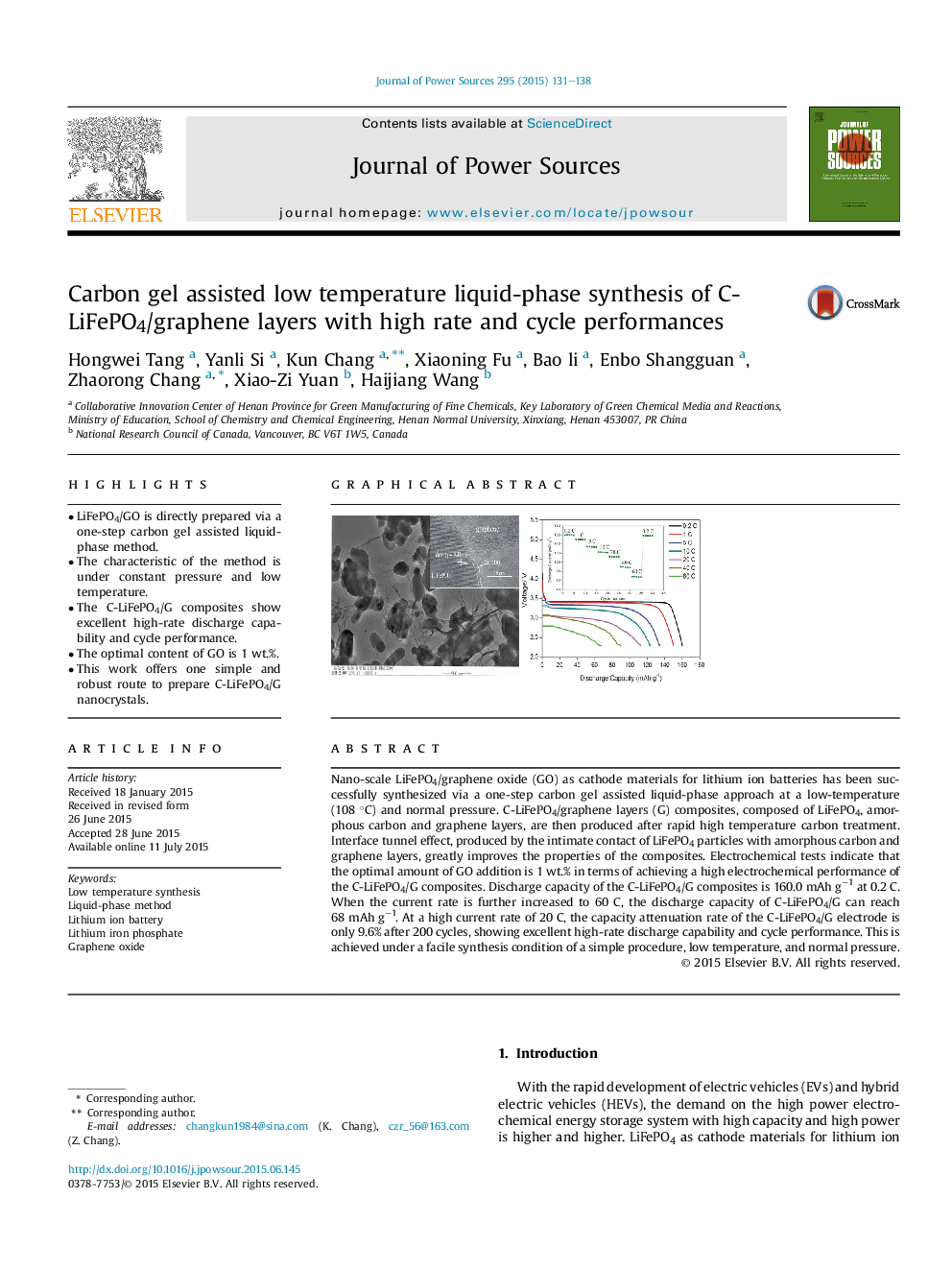| کد مقاله | کد نشریه | سال انتشار | مقاله انگلیسی | نسخه تمام متن |
|---|---|---|---|---|
| 1292765 | 1497937 | 2015 | 8 صفحه PDF | دانلود رایگان |

• LiFePO4/GO is directly prepared via a one-step carbon gel assisted liquid-phase method.
• The characteristic of the method is under constant pressure and low temperature.
• The C-LiFePO4/G composites show excellent high-rate discharge capability and cycle performance.
• The optimal content of GO is 1 wt.%.
• This work offers one simple and robust route to prepare C-LiFePO4/G nanocrystals.
Nano-scale LiFePO4/graphene oxide (GO) as cathode materials for lithium ion batteries has been successfully synthesized via a one-step carbon gel assisted liquid-phase approach at a low-temperature (108 °C) and normal pressure. C-LiFePO4/graphene layers (G) composites, composed of LiFePO4, amorphous carbon and graphene layers, are then produced after rapid high temperature carbon treatment. Interface tunnel effect, produced by the intimate contact of LiFePO4 particles with amorphous carbon and graphene layers, greatly improves the properties of the composites. Electrochemical tests indicate that the optimal amount of GO addition is 1 wt.% in terms of achieving a high electrochemical performance of the C-LiFePO4/G composites. Discharge capacity of the C-LiFePO4/G composites is 160.0 mAh g−1 at 0.2 C. When the current rate is further increased to 60 C, the discharge capacity of C-LiFePO4/G can reach 68 mAh g−1. At a high current rate of 20 C, the capacity attenuation rate of the C-LiFePO4/G electrode is only 9.6% after 200 cycles, showing excellent high-rate discharge capability and cycle performance. This is achieved under a facile synthesis condition of a simple procedure, low temperature, and normal pressure.
The C-LiFePO4/G composite exhibits the best electrochemical performance when the addition of GO is 1 wt.%, especially for its high-rate discharge performance and rate capability.Figure optionsDownload as PowerPoint slide
Journal: Journal of Power Sources - Volume 295, 1 November 2015, Pages 131–138